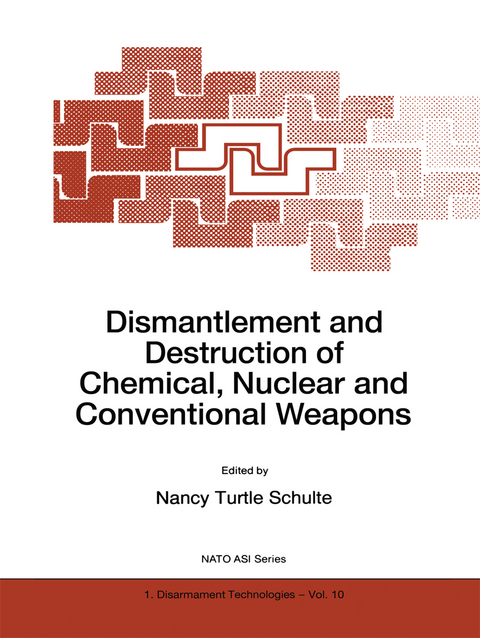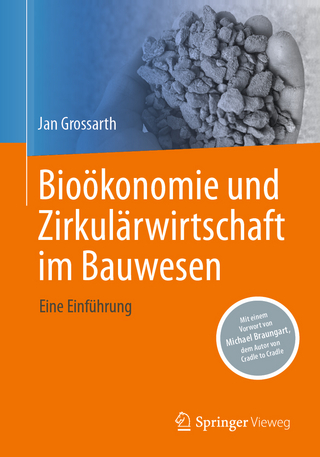
Dismantlement and Destruction of Chemical, Nuclear and Conventional Weapons
Springer (Verlag)
978-90-481-4817-2 (ISBN)
The end ofthe Cold War opened unprecedented opportunities for reductions in weapons of mass destruction. With these opportunities came new challenges, both scientific and political. Traditionally approached by different groups, the scientific, technical and political challenges are inextricably intertwined. Agreements to dismantle and destroy chemical, nuclear and conventional weapons, after having been negotiated via diplomatic channels, require the expertise of scientists associated with their development to determine the safest and most environmentally sound methods of destruction. It is in this context that representatives from sixteen countries and five international organizations were convened jointly by NATO, the Ministry of Foreign Affairs of the Federal Republic of Germany and the State Government of North Rhine Westphalia 19-21 May, 1996 in a meeting near Bonn to take stock of worldwide efforts to destroy and dismantle chemical, nuclear and conventional weapons remaining after the end ofthe Cold War. NATO support was provided under the auspices of the NATO Science Committee's Panel on Disarmament Technologies. The conference brought together the major actors involved in the dismantlement and destruction of chemical, nuclear and conventional weapons, highlighted the substantial accomplishments achieved in this area and pinpointed the remaining technical obstacles still to be overcome. It also underlined the critical importance of transparency, data exchange and verification as indispensable preconditions for disarmament and cooperative security.
1. Cooperation as a Common Strategic Interest.- Session 1: Dismantlement and Destruction of Chemical, Nuclear and Conventional Weapons.- 2. Toward Peace with Ever-Fewer Weapons.- 3. Dismantlement and Destruction of Chemical, Nuclear and Conventional Weapons.- 4. Disarmament and Conversion.- Session 2: Status of Implementation of Arms Control Treaties and Voluntary Commitments.- 5. Challenges in Reducing the Legacy of the Cold War.- 6. French Policy on Arms Control and Disarmament.- Session 3: National Perspectives on Cooperation in Disarmament.- 7. The Netherlands: Participation in Chemical Weapons Destruction.- 8. Norwegian Perspectives and Participation in Nuclear and Chemical Weapons Disarmament.- 9. U.S. National Perspectives on Cooperation in Disarmament: The Cooperative Threat Reduction Program.- 10. Belarus: Problems of Disarmament and Arms Control.- 11. The French-Russian Programme for Nuclear Weapons Dismantlement: The “AIDA Plan”.- 12. German Perspectives on Cooperation in Disarmament.- 13. Japanese Perspectives on the Destruction of Nuclear and Chemical Weapons.- 14. Implementation of Arms Control Treaties: A U.K. Perspective.- Session 4: Stocktaking of National and Bilateral Disposal/Destruction Programmes: Chemical Weapons.- 15. The Destruction of Chemical Weapons under the Chemical Weapons Convention.- 16. Overview of the United States Chemical Demilitarization Program.- 17. Destruction of German Old Chemical Weapons in Munster.- 18. United States Support to the Russian Chemical Weapons Destruction Program.- 19. German-Russian Cooperation in the Destruction of Chemical Weapons.- 20. Swedish-Russian Cooperation Project Concerning the Lewisite Storage Facility in Kambarka.- Session 5: Stocktaking of National and Bilateral Disposal/Destruction Programmes:Nuclear Weapons.- 21. Status of Dismantlement of Nuclear Weapons: U.S. Department of Energy.- 22. Cooperative Threat Reduction: The View from Russia.- 23. Nuclear Disarmament: A French Perspective.- 24. German Bilateral Cooperative Programmes in the Nuclear Field.- 25. Cooperative Approaches to Disarmament and Non-Proliferation.- 26. Japan’s Technical Secretariat on Cooperation for the Elimination of Nuclear Weapons.- 27. Combatting Illicit Trafficking of Nuclear Materials: Cooperation Projects Financed by the European Union with Non-Member Countries.- Session 6: Stocktaking of National and Bilateral Disposal/Destruction Programmes: Conventional Weapons.- 28. Plans, Programmes and Challenges in the Destruction of Conventional Weapons.- 29. The CFE Treaty as the Foundation for European Security: Russia’s Participation and Perspectives.- 30. Dismantlement and Destruction of Conventional Weapons.- Session 7: Experience with Currently Employed Chemical Destruction Technologies.- 31. Currently Employed Destruction Technologies: An Introduction.- 32. Chemical Warfare Agents and Weapons Disposal Experience in the United States.- Session 8: Alternative Chemical Destruction Technologies.- 33. International Union of Pure and Applied Chemistry (IUPAC) Working Party on Chemical Weapons Destruction Technologies.- 34. Destruction of Chemical Weapons.- 35. Old Chemical Weapons in Belgium: Do We Need Alternative Destruction Technologies?.- Session 9: Deactivation, Dismantlement and Destruction of Delivery Systems and Infrastructure for Nuclear Weapons.- 36. Deactivation, Dismantlement and Destruction of Delivery Systems and Infrastructure.- 37. Dismantlement of Strategic Nuclear Delivery Vehicles and their Associated Infrastructure: Prospects and Problems.- Session 10: Storage,Safeguarding and Disposition of Fissile Materials.- 38. Storage and Safeguarding of Fissile Materials.- 39. Disposition of Weapons-Grade Plutonium in Russia: Evaluation of Different Options.- 40. Storage, Safeguarding and Disposition of Fissile Materials.- Session 11: Technologies for Conversion and Civil Use of Demilitarized Materials.- 41. Plans, Programmes and Challenges in the Destruction of Conventional Weapons.- 42. Conversion Technologies and the Civilian Use of Demilitarised Material.- Session 12: International Organizations.- 43. The NATO Science Committee Disarmament Technologies Programme.- 44. Redirection of Research Facilities and Scientific Personnel.- 45. The Science and Technology Centre of Ukraine.- Session 13: Environmental Challenges Posed by Chemical and Nuclear Disarmament.- 46. Cooperation in Solving Environmental Problems of the Armed Forces of Russia and Germany: Experience and Prospects.- 47. Aspects of Environmental Protection in the Destruction of Chemical Weapons.- 48. Environmental Policy Challenges in Connection with Disarmament and Contaminated Military Sites.- 49. Environmental Challenges Posed by Nuclear Disarmament in the North: The Finnish Response.- 50. Disarmament and Environment.- Conclusion.- 51. Accomplishments and Challenges of Disarmament.- Appendix: List of Participants.
| Erscheint lt. Verlag | 6.12.2010 |
|---|---|
| Reihe/Serie | NATO Science Partnership Sub-Series: 1 ; 10 |
| Zusatzinfo | XVI, 246 p. |
| Verlagsort | Dordrecht |
| Sprache | englisch |
| Maße | 210 x 279 mm |
| Themenwelt | Naturwissenschaften ► Biologie ► Ökologie / Naturschutz |
| Sozialwissenschaften ► Politik / Verwaltung ► Europäische / Internationale Politik | |
| Sozialwissenschaften ► Politik / Verwaltung ► Politische Theorie | |
| Wirtschaft ► Betriebswirtschaft / Management | |
| ISBN-10 | 90-481-4817-0 / 9048148170 |
| ISBN-13 | 978-90-481-4817-2 / 9789048148172 |
| Zustand | Neuware |
| Haben Sie eine Frage zum Produkt? |
aus dem Bereich


